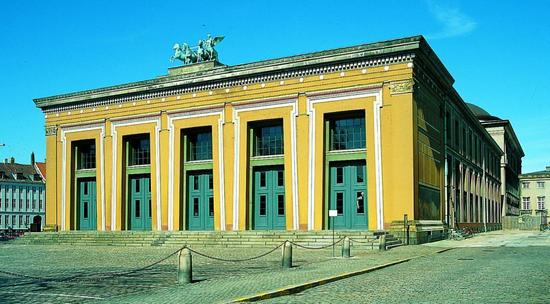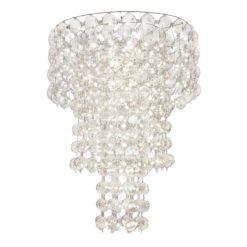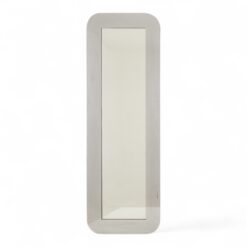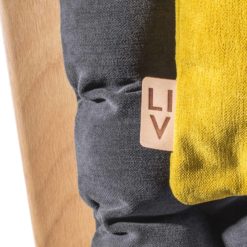Best Sellers
Styylish History
Antique & Modern Danish Furniture
The History of Danish Furniture
Denmark is the smallest country in Scandinavia, but despite its size, Danish furniture stands as the standard for Scandinavian furniture makers in Northern Europe.
Thanks to the country’s numerous forests, cabinetmakers had a steady supply of natural materials, resulting in most Danish furniture to be exclusively made out of wood.
Traditional cabinetmaking and handmade pieces were highly valued, particularly during the 19th-century.
With the turn of the 20th century, elements of traditional cabinetmaking began to mix with contemporary, industrial themes.
Designers apprenticing with cabinetmakers while taking university courses like architecture developed sleek and modern furniture ideas.
By joining the traditional components of cabinetmaking with novelty and practicality, designers began producing furniture where function determined its look.
19th-Century Characteristics
Classic Antiquity wall paintings, vases, and reliefs inspired 19th-century Danish furniture and architecture.
Many designers tried to replicate antique furniture, similar to what happened in England to Regency style furniture.

19th-Century Cabinetmakers
Joseph Christian Lillie (1760-1827)
Lillie was one of the leading neoclassical architects and interior designers in Denmark. During the first part of his career, he created many popular furniture designs.
Known as the “father of Danish Classicism,” Harsdoff was 18th-century Denmark’s top architect and the director of the academy.
Lillie designed the interiors of the Christiansborg Palace apartments and the decorated of the suite of newly married Dutch royals Princess Louise Augusta and Christian Friedrich of Augustenborg in 1786.
He also created the furniture for Marienlyst Castle in 1791, the Behnhaus in Lübeck around 1800, and many other projects.
Lillie is one of the most well-known 19th-century Danish craftsmen. Classically-inspired motifs he designed in the late 18th century decorated much of the furniture in this era.

Michael Gottlieb Brickner Bindesbøll (1800-1856)
Although Bindesbøll was a career architect, his designs strongly influence Danish furniture during the 19th century. He actively worked during the Danish Golden Age in the first part of the 19th century.
He is most famous for the Thorvaldsens Museum in Copenhagen as well as a preeminent figure in the transition of Danish architecture from late classicism to Historicism.

During a visit to Weimar, Bindesbøll, another architect, introduced him to polychromy in Classical architecture.
Upon returning to Denmark, he continued his studies while working, winning a scholarship in the process.
Bindesbøll traveled to Rome with the money he won. He also stayed in Southern Italy and Greece. On this trip, he studied the polychromy of various temples, which profoundly impacted his style.
20th-Century Transition
Towards the end of the 19th century and into the 20th, other styles grew in importance, including Arts and Crafts, Art Nouveau, naturalistic forms, and Japanese styles.
Gradually, Nordic motifs replaced Roman ones, especially floral embellishments.

Courtesy of the Victoria and Albert Museum, London
But the largest influence on 20th-century Danish design was the Bauhaus, a German design school that pushed for the mass production of art and design in the modern age.
Hoping to encourage more furniture design in Denmark, Kaare Klint established the School of Arts and Crafts at the Royal Danish Academy of Art in 1924.
This school became a hub for furniture designers across the country, which elevated Denmark’s reputation for design around the world after WWII.
Soon, Danish furniture became famous for its distinctive characteristics and became known as Danish Modern.
Characteristics of Danish Modern
At the core of all modern Danish furniture is the aim to unify both aesthetics and functionality. Additionally, Danish furniture from any century has the same high-level craftsmanship. Most pieces were built to have longevity.
What makes this style so unique is the stress on the piece’s natural functionalism and the avoidance of geometric shapes.
The tools and materials used for making the pieces are as essential as the simplicity and the interaction between the furniture and the person using it.
Designers also consider how a piece will work in its surroundings. Scandinavian homes are usually painted white or similar to intensify any natural light. The furniture adds color and interest to rooms that would typically look sterile.
Contrast is one of the primary elements of Danish furniture, as well as most Scandanavian design.
Typically, bold colors and materials like wood, leather, and metal heighten the furniture’s appearance.
Similarly, the contrast between the naturally-occurring materials enhances the unconventional shapes of Danish furniture.
Danish Modern Designers
While Denmark has produced numerous high-quality, innovate pieces for centuries, the pinnacle of Danish furniture lasted from 1940 to 1960.
Iconic designs include the egg chair by Arne Jacobsen (1958) and the wishbone chair by Hans J. Wegner (1950).

Kaare Klint (1888-1954)
Known as the father of modern Danish furniture, Klint was an architect and furniture designer who focused on clean, pure lines, premier materials, and excellent craftsmanship.
Klint’s debut piece was the Faaborg Chair for the Faaborg Museum in 1914. From 1921-1926, Klint converted the Frederiks Hospital into the Danish Museum of Art and Design.
In addition to clean lines and high-quality materials, Klint meticulously researched each design. He considered both functionality and proportions that fit the human body.
Other examples of his work include the Propeller Stool (1927), the Safari Chair and Deck Chair (respectively, 1933), the Church Chair (1936), and the Circle Bed (1938).

Klint inspired other well-known designers, including Poul Kjærholm and Børge Mogensen.
Finn Juhl (1912-1989)
Juhl’s skills as an architect and interior and industrial designer have made him one of the most prominent figures in Danish Modern furniture history.
He helped pioneer Danish design during the 1940s both at home and abroad by introducing Danish Modern to the U.S.
Juhl frequently softened the lines of modernist wooden chairs. He preferred natural shapes, teak, and other dark woods, which went against the common practice of using oak.
Juhl’s most famous piece was the floating back and seat, which he used in the majority of his chair designs. The upholstered parts contrast with the hardwood in the rest of the chair. From 1945-1948, full back and seats that appeared to hover on their supports grew in popularity.

Børge Mogensen (1914-1972)
Mogensen studied at the School of Arts and Crafts, but before that, he apprenticed as a cabinetmaker.
Mogensen believed that good design was functional and straightforward, going so far as to study human behavior to ensure the functionality of his plans.
His furniture reflects his strong beliefs, which is evident in the pared-down vertical and horizontal lines and his use of natural materials like oak and leather.

While designing furniture for Frederica Furniture, Mogensen became head of FBD design studio, a large cooperative that produced trendy furniture at consumer-friendly prices.
Morgensen’s designs earned him several distinguished awards and were instrumental in the evolution of Danish Modern.
Fritz Hansen
Fritz Hansen, a Danish carpenter, founded the Republic of Fritz Hansen in 1872. In 1915, he debuted his first chair made out of steam bent wood.
Since 1934, this company has collaborated with many artists and furniture makers, producing cutting-edge designs that are a hallmark of Danish furniture.

Danish Furniture Today
This style continues as one of the most popular and favorite designs in the world. First, because of its simplicity, Danish furniture is easy to mix with old and new pieces.
These pieces are minimal yet accentuate style and comfort without concerning itself with color, details, and elegance.
Adding a piece of Danish or Scandinavian furniture to any room is one of the best ways to give an older room a modern yet retro touch.

Styylish
For more antique furniture history, style inspiration, and more check out the blog!
Let us help you with your home furnishing needs! Visit the shop for one-of-a-kind antiques to complete your home’s unique design.
We have mid-century, baroque, and so much more. See for yourself today!















































Thank you Stylish for your very interesting and instructive article. I’d love to receive your newsletter directly at my email address. Thanks, Judith
Dear Judith,
Thank you for your comment! We are glad that you liked our article about Danish furniture! We are working on our first newsletter and will be happy to put you on the list.
Your Styylish team